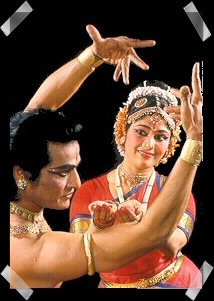The moment I set my eyes on Suchismita Dasgupta's Nextiles saris, I instantly fell in love with them. Succumbing to the vibrant colours and stylish juxtaposition of contrast, I wanted all of them. So will you when you see them. And hold on, she even has a great variety of garments for both men and women. Nextiles derives its name from Natural Textiles. Whether you like brights or pastels-- you will surely find something at Nextiles, that specialises in hand woven and hand embroidered textiles.
After her graduation, Suchismita bagged a Diploma in Brand Building Communication. She then stepped into the world of advertising and started her career at McCann Erickson, Kolkata with Art Direction and Print Production.
But she was destined to do something more challenging. And her flair for recreating something sublime from a mundane piece of textile caught the attention of many and thus Suchismita made forays into the houses of international brands like Armani, DKNY, Kenzo, Dries van Noten, Sonia Rykiel, Etro etc. Meanwhile, her work with NGOs while designing their communication materials, brought her closer to artisans. This led her to start Nextiles in 2004 to give shape to her vision and cater to those who believed in style over fashion and shared her passion for natural textiles.
Suchismita's Nextiles is not just a brand or a boutique; an organisation dedicated to offer the best quality natural fibres and transform the lives of traditional Indian artisans. She dreams of a world free of mass produced designs, a fair share to the artisans and predicting the styles of tomorrow.
Suchismita was chosen to participate in the Artist in Residence programme arranged by the Ministry of Cultural Affairs of the French Embassy in India in 2005, where she researched Art Nouveau in France and looked into the possibility of using them in textiles.
In 2006, she took part in the Ethical Fashion Show in Paris, France, where her prime focus was on recycling natural fibres/textiles and she exhibited a collection dedicated to Art Nouveau using traditional Indian hand embroidery and block printing.
Presently retailing from Kolkata, Suchismita has taken part in a number of national exhibitions, fashion shows and designed costumes for films. You can also buy her items through her facebook page or through emails at : suchismita.dasgupta@gmail.com
She will soon launch her range of accessories and jewellery to complement her exquisite range of textiles. I wish Suchismita tonnes of success and happiness in all her endeavour.
Via
 |
| Very Talented Suchismita |
 | |
| Matka Jamdani with checkered pallu |
After her graduation, Suchismita bagged a Diploma in Brand Building Communication. She then stepped into the world of advertising and started her career at McCann Erickson, Kolkata with Art Direction and Print Production.
But she was destined to do something more challenging. And her flair for recreating something sublime from a mundane piece of textile caught the attention of many and thus Suchismita made forays into the houses of international brands like Armani, DKNY, Kenzo, Dries van Noten, Sonia Rykiel, Etro etc. Meanwhile, her work with NGOs while designing their communication materials, brought her closer to artisans. This led her to start Nextiles in 2004 to give shape to her vision and cater to those who believed in style over fashion and shared her passion for natural textiles.
Suchismita's Nextiles is not just a brand or a boutique; an organisation dedicated to offer the best quality natural fibres and transform the lives of traditional Indian artisans. She dreams of a world free of mass produced designs, a fair share to the artisans and predicting the styles of tomorrow.
Suchismita was chosen to participate in the Artist in Residence programme arranged by the Ministry of Cultural Affairs of the French Embassy in India in 2005, where she researched Art Nouveau in France and looked into the possibility of using them in textiles.
In 2006, she took part in the Ethical Fashion Show in Paris, France, where her prime focus was on recycling natural fibres/textiles and she exhibited a collection dedicated to Art Nouveau using traditional Indian hand embroidery and block printing.
Presently retailing from Kolkata, Suchismita has taken part in a number of national exhibitions, fashion shows and designed costumes for films. You can also buy her items through her facebook page or through emails at : suchismita.dasgupta@gmail.com
She will soon launch her range of accessories and jewellery to complement her exquisite range of textiles. I wish Suchismita tonnes of success and happiness in all her endeavour.
Via






















































